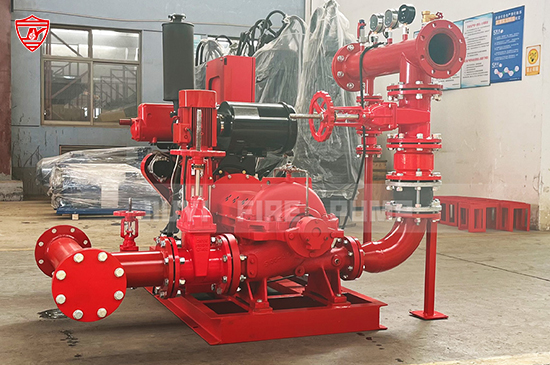A fire pump is a crucial component of a fire protection system, designed to supply water at high pressure to sprinkler systems and hydrants in the event of a fire. It ensures that adequate water flow and pressure are available, especially in buildings where the municipal water supply is insufficient.
Fire pumps are activated when the fire suppression system detects a drop in water pressure, typically due to sprinkler or hydrant activation. These pumps draw water from an external source—such as a municipal line, water tank, or reservoir—and distribute it at high pressure to extinguish fires effectively.

Electric Fire Pumps – Powered by electricity, these are commonly used in buildings with a reliable power supply.
Diesel Engine Fire Pumps – Ideal for locations where electricity is unreliable, offering a backup power source.
Jockey Pumps – Maintain system pressure to prevent unnecessary activation of main fire pumps.
Vertical Turbine Fire Pumps – Used when water must be sourced from underground tanks or reservoirs.
Ensures Fire Suppression System Effectiveness – Provides the required water pressure to sprinklers and hydrants.
Meets Fire Code Compliance – NFPA 20 and UL-listed fire pumps are mandatory in many commercial and industrial buildings.
Enhances Life Safety & Property Protection – Rapid water delivery prevents fire spread, minimizing damage and saving lives.
Regular inspection, testing, and maintenance per NFPA 25 standards are necessary to ensure fire pumps function reliably during emergencies. Scheduled performance tests help identify issues before they compromise fire safety.
A well-maintained fire pump is essential for effective fire suppression, regulatory compliance, and overall safety. Whether it’s an electric or diesel-powered fire pump, choosing the right system ensures optimal fire protection for any facility.